
Mitsubishi and Tombow sit atop the Japanese woodcase pencil manufacturing industry. Smaller manufacturers such as Kita-Boshi, Camel, Kirin, and Eyeball also have market segments. But there are also other companies who aren’t manufacturers per se, but have a pencil line. The most notable is Pentel, who have brought some great products to the market over the years. Pentel sadly seems to be leaving the market, with the Black Polymer 999 and Craft Design Technology pencils both withdrawn. (This report is due for revision.)
Sailor has also sold pencils in the past. And the California Republic Palomino is made in Japan. Checking Bundoki, Pencils.jp, and Rakuten shows many other makes and brands of pencils. A look at the Japanese pencil association website indicates many members are involved in the pencil manufacturing infrastructure, and not full manufacturers themselves. So presumably some combination of these firms supply the other sellers.
From Ohto, (Tokyo, Japan, founded in 1929) we have one more fascinating and super high quality pencil, the Ohto 9000. Ohto is known for fountain pens and mechanical pencils, and I only recently learned that they also have a line of woodcase pencils. The products are exceedingly hard to find. Stationery vendors and auction sites don’t seem to even have a whiff of them – I thought I would never see an example. As best as I can guess, Ohto commissions the manufacture of these pencils for limited export to Taiwan.
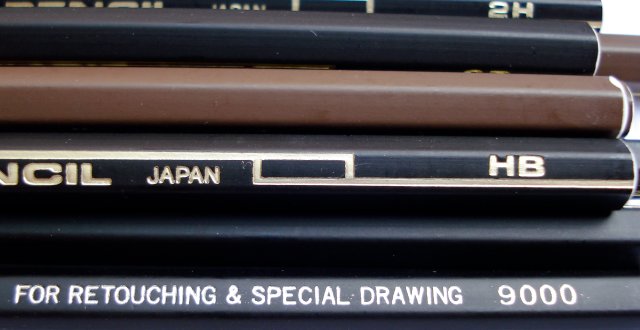
The pencils have simple matte finishes in black or brown. They are plainly marked:
Obverse:
Ohto Pencil Japan HB
Reverse:
For Retouching & Special Drawing 9000
The only issue I have with the pencil presentation is the labelling with a metallicized sticker at the end to be sharpened. The sticker is lightweight yet very strong. I am afraid it might “gum up” or degrade a desktop sharpener, either electric or manual. Yet removing the sticker leaves a sticky residue.
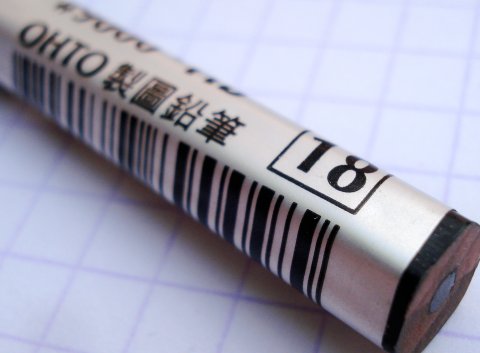
Sharpening reveals a beautiful cedar grain – truly exceptional.
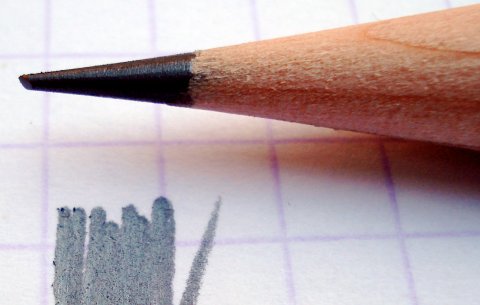
The pencil leaves a rich, saturated, dark mark, really first-rate. On a Rhodia pad, the lines don’t easily smudge, yet erase easily with a Mitsubishi Boxy eraser.
There are a lot of good or “good enough” pencils out there, but it is really exciting to find one that is so exceptional. I compared it with the best in the business – the Mitsubishi Hi-Uni and Tombow Mono 100. While the Ohto does not have the fancy finish or the precision lettering, the lead seems to belong in this category. In my testing of the HB grade, I thought that the Hi-Uni was perhaps smoother and waxier, while the Mono 100 had the most precision and and ability to keep a point. The Ohto seemed somewhere in the middle, which is very good company. I haven’t tested other grades, nor used it over an extended period of time.
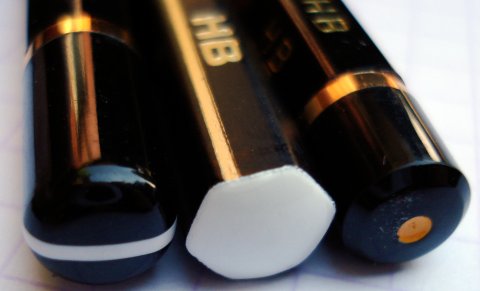
I hope Ohto might consider further export. The limited distribution unfortunately means this excellent pencil will not be known in most parts of the world.
Some further notes: A box of twelve includes six in brown and six in black.


A very attractive shiny black tin with a set of grades is also available:
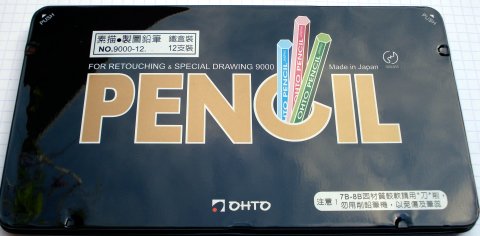
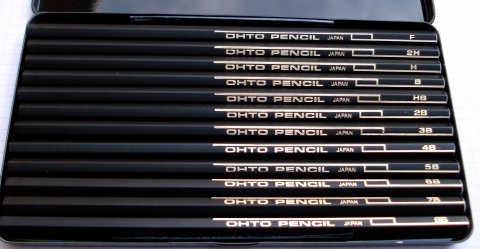
A few other notes. The boxes and a few loose pencils (presumably older) have the JIS mark. And one has the initials “K.B.P.” imprinted. Which brings me to some speculation – the cardboard box strongly resembles that of the Kita-Boshi 9606 pencil. The painted caps and matte finish also resemble Kita-Boshi’s work. I would guess that Ohto contracted Kita-Boshi as the manufacturer.
My sincere thanks to blog reader and pencil aficionado Robert for sending me these pencils. Robert contacted me and asked if I would like to try an Ohto pencil. Little did I know that such a treasure trove of great pencils was headed my way!

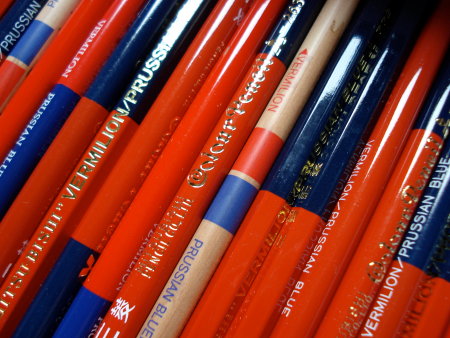


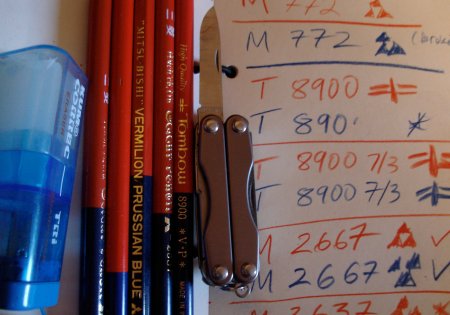
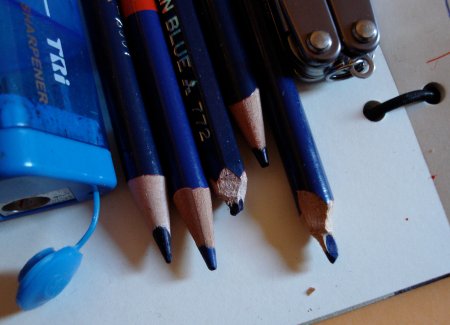
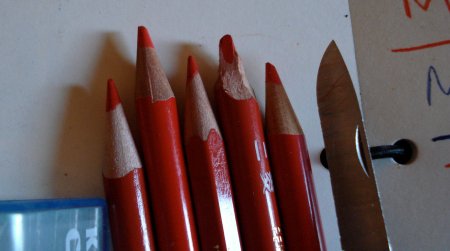
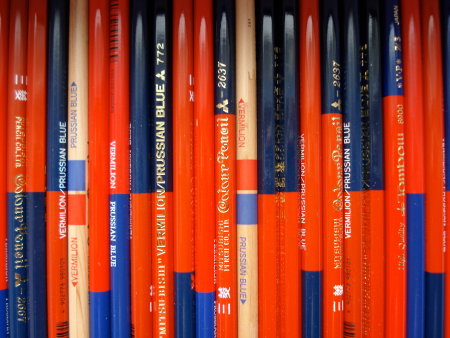
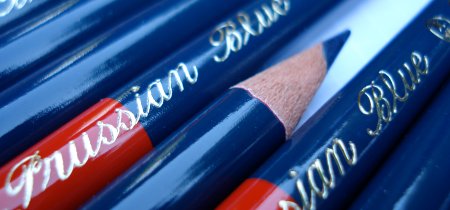
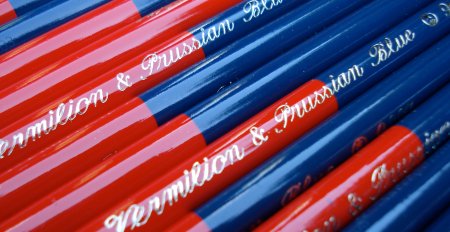

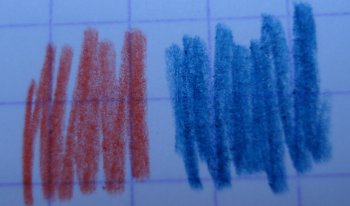
 While Mitsubishi, Tombow, and Pentel may be better known in the west, there is at least one more quality Japanese pencil manufacturer of note: Kita Boshi.
While Mitsubishi, Tombow, and Pentel may be better known in the west, there is at least one more quality Japanese pencil manufacturer of note: Kita Boshi.